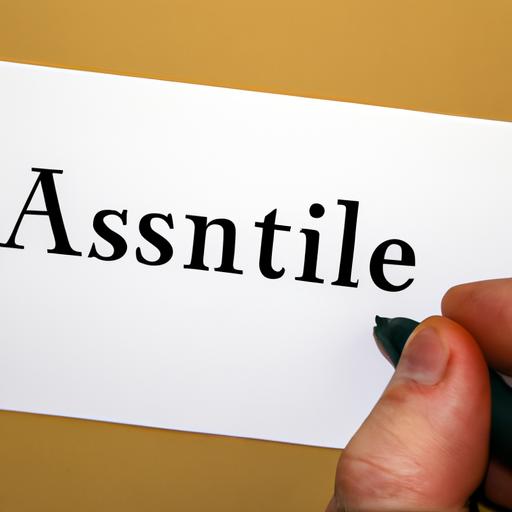How to Write an Article Title in a Paper
Table of Contents
As writers, we know that the title of an article is the first thing that readers see. It’s the hook that draws them in and entices them to read further. But writing an effective article title is not as simple as it seems. It requires a strategic approach that takes into account the purpose of the article, the audience, and the keywords that will make it discoverable by search engines.
In this article, we’ll discuss the best practices for writing an article title in a paper that is both SEO-optimised and compelling.
Understanding the Purpose of the Article Title

Before we dive into the technical aspects of writing an effective article title, it’s essential to understand the purpose of the title. The article title serves several purposes, including:
1. Capturing the Reader’s Attention
The article title is the first thing that readers see, and it needs to capture their attention. A compelling title will entice readers to click on your article and read further.
2. Informing the Reader
The article title should give readers a clear idea of what the article is about. It should be informative and provide readers with an idea of what to expect from the article.
3. SEO-Optimisation
The article title is also essential for SEO-optimisation. Including relevant keywords in your title can help your article rank higher in search engine results pages (SERPs). When writing your article title, it’s essential to consider the keywords that your target audience is searching for and include them in your title.
Tips for Writing an Effective Article Title
Now that we understand the purpose of an article title let’s dive into some tips on how to write an effective one.
Use of Keywords
Using keywords is essential for SEO-optimisation. It’s important to identify the keywords that your target audience is searching for and include them in your article title. This will help your article rank higher in search engine results pages (SERPs). However, it’s important to ensure that the keywords fit naturally into the title and don’t appear forced.
Use of Attention-Grabbing Phrases
Your article title should be attention-grabbing and entice readers to click on your article. Consider using phrases that are intriguing or provocative. For example, “The Shocking Truth About…,” “The Ultimate Guide to…,” or “The Top 10 Secrets of…”. These types of phrases can help your article stand out from the crowd and encourage readers to click through to your content.
Avoidance of Vague or Generic Titles
Avoid vague or generic titles that don’t provide readers with a clear idea of what the article is about. Titles such as “How to Improve Your Life” or “The Benefits of Exercise” are too broad and don’t provide enough detail to capture the reader’s attention. Instead, focus on creating a title that is specific and informative.
The Structure of an Article Title
The structure of your article title is just as important as the content. A well-structured title can help your article rank higher in search engine results pages (SERPs) and make it more appealing to readers.
The Use of Colons and Hyphens
Colons and hyphens can be used to separate different elements of your title. For example, “The Ultimate Guide to Writing an Article Title: Tips and Tricks” or “The Shocking Truth About Health and Wellness: A Doctor’s Perspective.” Colons and hyphens can help break up longer titles and make them easier to read.
Capitalization Rules
When it comes to capitalization, it’s important to follow the appropriate rules. Generally, the first letter of each word in the title should be capitalized, with the exception of smaller words such as “and,” “or,” and “the.” However, some titles may require specific capitalization rules, such as titles of books or movies.
Length Guidelines
The length of your article title is also important. Titles that are too long can be overwhelming and difficult to read, while titles that are too short may not provide enough detail. Generally, a good rule of thumb is to keep your title between 60-70 characters. This will ensure that it’s readable and provides enough information to entice readers to click through to your article.
Examples of Effective Article Titles
To help you understand how to write an effective article title, let’s look at some examples:
1. “The Power of Positive Thinking: How to Change Your Life with a Positive Attitude”
This article title is effective because it’s attention-grabbing, informative, and SEO-optimised. The use of the phrase “power of positive thinking” is a well-known concept, and the inclusion of “how to change your life” makes it clear what readers can expect from the article. Additionally, the use of the keyword “positive attitude” makes it more discoverable by search engines.
2. “10 Easy Ways to Reduce Stress and Improve Your Mental Health”
This article title is effective because it’s informative and SEO-optimised. The use of the number “10” and the phrase “easy ways” makes it clear that the article will provide practical tips that readers can implement in their lives. Additionally, the use of the keywords “reduce stress” and “improve mental health” makes it more discoverable by search engines.
Conclusion
In conclusion, writing an effective article title in a paper requires a strategic approach that takes into account the purpose of the article, the audience, and the keywords that will make it discoverable by search engines. A compelling article title should capture the reader’s attention, inform the reader, and be SEO-optimised.
When writing your article title, it’s essential to consider the keywords that your target audience is searching for and include them in your title. Additionally, using attention-grabbing phrases, numbers, and specific language can make your article title more effective.
By following these best practices, you can write an article title that not only ranks well in search engines but also engages and informs your readers. Remember, the title is the first impression that readers have of your article, so make it count!

